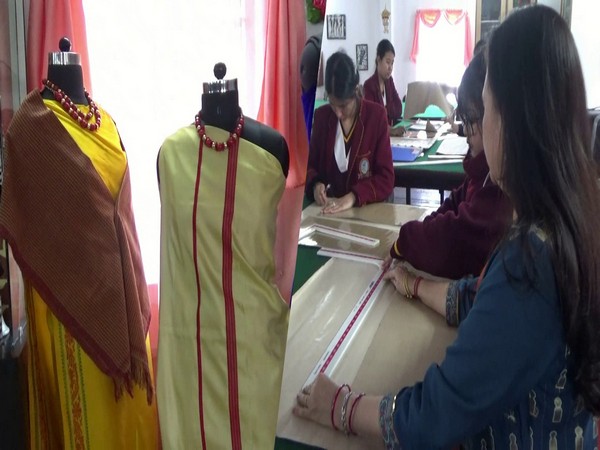Sustainable Fashion: UNDP wants you to wear properly to reduce Global Warming
The experts have estimated that the amount of water used to prepare one pair of jeans and a T shirt is sufficient for a person to drink for 13 years.

Gone are the days when global leaders were advocating ‘Wear What You Want! and Eat What You Like!’. As the concerns of global warming and climate change are now a reality, the international organizations have launched campaigns to reduce emissions wherever it is possible and achieve the target of peaking global warming at 1.5 degree Celsius by 2030. In this series, the United National Development Program (UNDP) is advocating for sustainable fashion to make the people aware about the emission created by the garment industry and the ways to minimize the emissions.
“Did you know the #fashion industry generates around 10 percent of global carbon emissions? The environmental impact of our clothes is immense. @UNDP Goodwill Ambassador Michelle Yeoh explores what sustainable fashion could like,” said UNDP in video message shared on Twitter on Wednesday.
Did you know the #fashion industry generates around 10% of global carbon emissions? The environmental impact of our clothes is immense. @UNDP Goodwill Ambassador Michelle Yeoh explores what sustainable fashion could like https://t.co/chcnCqKCXK #fashionweek #nyfw #pfw #mfw #lfw pic.twitter.com/UHEvOpRsN5
— UNDP Climate (@UNDPClimate) January 15, 2020
It’s not only the UNDP, several agencies of the UN and global voluntary organizations are also burning their midnight oil to find ways to reduce emissions from garment industry. In 2019, about 150 fashion brands signed G7 Fashion Pact. The issue of emission from garment industry was prominently raised in the Conference of Parties (COP24) in 2018 at Katowice which resulted in Fashion Industry Charter for Climate Action. Here we present some of the approaches followed by stakeholders of the garment industry from manufacturers to consumers to minimize the emission and increasing their contribution in fighting the alarmingly rising global warming.
Natural Fibers: There is an increasing trend in global brands to maximize natural fires in their products. Besides the cotton, the alternative option of natural fibers such as pomegranate leaves, banana fibers, sheep wool and other options are being explored. In addition, some brands have also started using algae in the footwear industry, particularly for women.
Recycled Materials: There is an emphasis on the use of recycled materials in the garment industry. The scope of recycling in garment industry is not only limited to just manufacturing units but its transportation and use till the end consumer. In addition to individual efforts, the signing of G7 Fashion Pact and the UN’s Sustainable Fashion Industry Charter for Climate Action, both by over 150 fashion brands are considered path breaking achievements.
Minimize Water Consumption: The experts have estimated that the amount of water used to prepare one pair of jeans and a T shirt is sufficient for a person to drink for 13 years. In fact, almost every industry whether it uses water as an ingredient in its product or not, is dependent on water was washing, cleaning, and other activities. Besides direct use of water, the harmful chemicals used as color in garment industry also damage the environment. Some popular garment brands have recently committed to adopt new techniques to minimize water consumption in its manufacturing units as part of their contribution to sustainable development goals (SDGs) of the UNDP.
Sale and Purchase of Secondhand Garments: Until now, purchase of used garments was considered backwardness but the voluntary organizations throughout the world are campaigning to promote the resale and reuse of garments for the sake of climate change. According to estimates, the global value of resale market has crossed USD 24 billion. The data also show that resale market is growing 21 times faster than retail apparel market and is being more popular in developed countries. In the US, about 64 percent women use secondhand products, said a study. NGOs throughout the world are working to ensure the second hand clothes used by richer population are distributed among the poor thus making their life sustainable and contributing in minimizing global warming.
(Disclaimer: The opinions expressed are the personal views of the author. The facts and opinions appearing in the article do not reflect the views of Devdiscourse and Devdiscourse does not claim any responsibility for the same.)
- FIRST PUBLISHED IN:
- Devdiscourse










